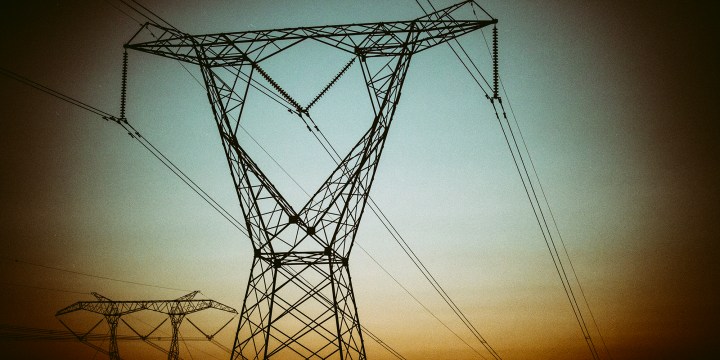Coronavirus & Energy
Eskom must adapt its reform agenda to a post-pandemic economy

Covid-19 will leave a lasting imprint on SA’s economy, healthcare system and the lives of its citizens. Reform of the electricity sector has been until now a key priority for the Ramaphosa government. How will the crisis caused by Covid-19 affect this process?
There are four new forces acting on the electricity sector in South Africa:
- Falling demand;
- Broader economic shock;
- The increasingly precarious position of workers; and
- The demands for stimulus across the economy including in the electricity sector.
These forces create the need for a fundamental rethink of the short- and medium-term electricity sector reform plans.
The ongoing energy crisis in South Africa is characterised by unreliable electricity supply due to an embattled power utility. The recent reduction in demand as industries and businesses have closed, has provided temporary relief from the rolling blackouts that had become commonplace in South Africa. Although this may feel like a welcome respite for citizens, the decline in electricity demand has decreased Eskom’s revenues by several billion rand, according to its CEO, and in turn, increases the already staggering debt burden of the utility.
Rising debt will undoubtedly necessitate an increase in immediate bailouts to keep the lights on. On the other hand, the lower electricity demand has allowed Eskom to undertake vital short-term maintenance on its power stations, such as the recently announced safety critical repairs to the ash dam at the Camden power plant.
In the short term, increasing public expenditure is unavoidable and critical to mitigate the effects of the virus, but post-Covid-19, the country will be saddled with an economy in recession and a heightened need for borrowing. Moreover, as the economy is slowly revived and lockdown restrictions ease, Eskom will once again be faced with the challenges of managing grid supply with demand while maintaining an ageing fleet of power stations and undertaking its proposed reform.
Electricity sector austerity, one potential reaction to deficits, could set off a vicious cycle where electricity services continue to decline, further damaging SMMEs and economic growth as a whole.
As policymakers contemplate how to kickstart the economy, electricity sector stimulus should be on the table. The design of the stimulus should be driven by the same principles that should guide the reform of the sector more generally. They should contribute to the overall goals of equity, poverty reduction, and reduction of environmental pollution, as detailed in a report published by IISD.
Stimulus should avoid locking in polluting energy at public expense and should instead lay the groundwork for a transition away from coal. Similarly, support for renewable energy should be designed to maximise community and public benefits and prioritise job security in areas with high levels of unemployment over the lowest possible prices.
The aftermath of Covid-19 will require Eskom to adapt its reform agenda to the post-pandemic economy.
Even before the current crisis, concerns were raised that the original standard model of electricity sector reform, which is the basis for Eskom’s reform plans, does not line up with critical climate change, air pollution, equity, and job creation goals. A revised reform agenda should take the effect on jobs into account, safeguarding job security and job creation.
Additionally, the original standard model of reform prioritises economic efficiency with policies such as market-based electricity tariffs, which are unsuitable in South Africa. Policies like these may disproportionately affect poor and vulnerable consumers, who make up 49.2% of South Africa’s population.
The original standard model of electricity reform also involves privatising all future and existing electricity sector assets (including renewable energy assets). As we have seen through the REIPPP however, most renewable energy projects in South Africa are privately developed and owned – with further privatisation of non-renewable energy on the horizon.
Powerful trade unions and some political parties alike already vehemently oppose private sector ownership of electricity assets. This fierce opposition may intensify should the original standard model of reform be adopted, and could subsequently create roadblocks to decarbonising South Africa’s energy sector. Add in a global pandemic and a looming recession and it becomes clear that electricity sector reforms need to do more than simply increase economic efficiency.
Too much has changed in the last two months for reforms to continue in their proposed form. Eskom needs to rethink its strategy to avoid the risk of increasing unemployment in a time of wider crisis. These reforms could be a central pillar of South Africa’s economic recovery plan – but only if Eskom carefully adapts them to the current climate. To do this, we need a revised model for electricity sector reform that suits the current context and meets the unique needs of the South African people.
Balancing crucial reform and economic recovery post-Covid-19 will not be straightforward, but with the same commitment and leadership that has been evident during this crisis, it is definitely possible. DM
Chido Muzondo is an energy policy consultant with the International Institute for Sustainable Development, www.iisd.org Richard Bridle is a senior policy adviser at IISD.
"Information pertaining to Covid-19, vaccines, how to control the spread of the virus and potential treatments is ever-changing. Under the South African Disaster Management Act Regulation 11(5)(c) it is prohibited to publish information through any medium with the intention to deceive people on government measures to address COVID-19. We are therefore disabling the comment section on this article in order to protect both the commenting member and ourselves from potential liability. Should you have additional information that you think we should know, please email [email protected]"



